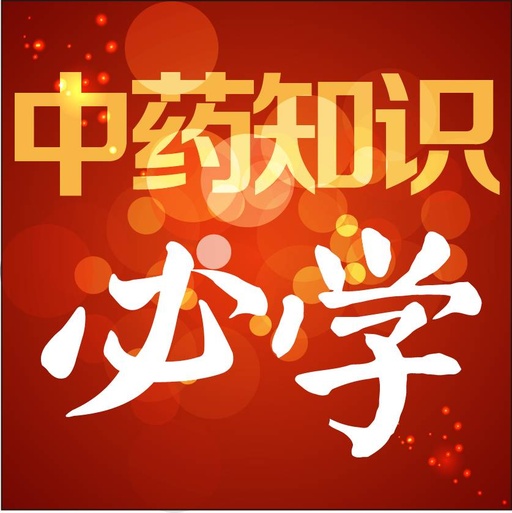
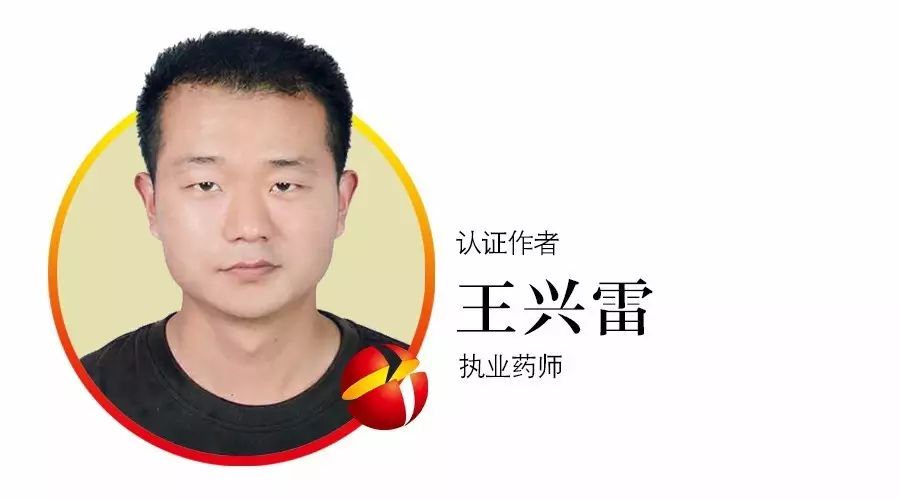

When the wheat dies in spring without rain, the grain suffers from early autumn frost.
In the late year, there is no food to eat, so one digs for Di Huang (Rehmannia glutinosa) in the fields.
What is it for? To exchange it for food.
In the early morning, I go with my hoe, and by dusk, I have not filled my basket.
I bring it to the rich man’s house, to sell it to the white-faced gentleman.
With you, I can feed the fat horse, which can illuminate the ground.
I wish to exchange the horse’s leftover grain to relieve this hungry stomach.
This poem narrates the story of a farmer who digs for Di Huang to exchange for horse feed to satisfy his hunger, reflecting the tragic plight of refugees who cannot even feed their cattle during times of famine, vividly showcasing the cruelty of the old society.
“In the late year, there is no food to eat, so one digs for Di Huang in the fields.” In this line, Di Huang is an herb with cooling blood and nourishing properties. This issue introduces Shu Di Huang (Prepared Rehmannia).
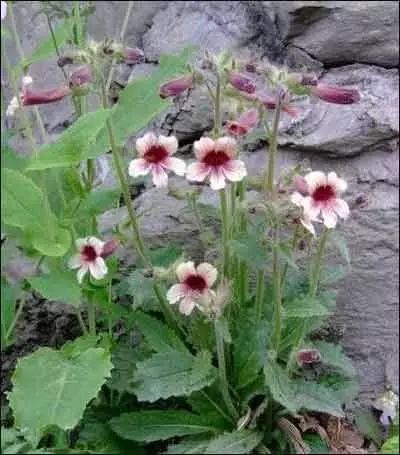
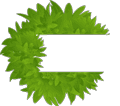
What are the four virtues? One is propriety, two is righteousness, three is integrity, and four is shame. A nation has four virtues; if one is lost, it will topple; if two are lost, it will be in danger; if three are lost, it will be overturned; if four are lost, it will be destroyed. A toppled nation can be righted, a dangerous one can be secured, an overturned one can be restored, but a destroyed one cannot be revived. If the four virtues are not upheld, the nation will perish.
Do you know the four virtues of medicine? They are Ren Shen (Ginseng), Shu Di (Prepared Rehmannia), Fu Zi (Aconite), and Da Huang (Rhubarb). When illness reaches a fearful state, these four are indispensable. If one hesitates, it will surely lead to failure. Ren Shen and Shu Di are the good ministers in peaceful times; Fu Zi and Da Huang are the good generals in chaotic times. Troops cannot be used for long, hence good generals are used temporarily. In chaos, one must not forget governance, hence good ministers are indispensable. The Huang Di Nei Jing states: “If the door is not guarded, the granary will not be stored.” Those who can guard will live, and those who lose will die. Nowadays, people tread on Mang Xiao (Glauber’s salt) and Da Huang as if they were a smooth path, while viewing Ren Shen, Fu Zi, and Shu Di as venomous snakes, which is foolish.
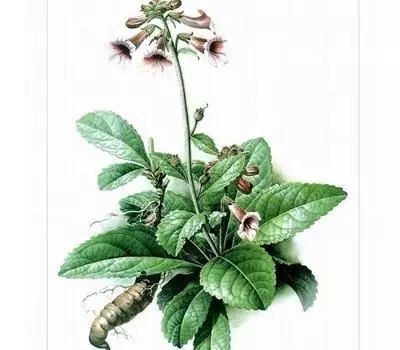
Di Huang is also known as Di Sui (Earth marrow). It is considered precious because it grows underground, hence the character for Di (地) is used. The essence of Di Huang is evident in its nature and usage. Its juice stains hands deep yellow; its taste is sweet and does not disperse on the tongue. Sucking the marrow of the earth, it is quite greedy like a wild wolf, hence the soil where it is planted becomes exhausted, and it takes ten years to become sweet, its power and virtue can be anticipated.
Di Huang sprouts in February, initially growing low, not exceeding a foot in height, with leaves resembling mountain cabbage and hairy and rough, also similar to small mustard leaves but thicker, with central wrinkles like a pinch, and the stem has fine hairs, with flowers at the tips resembling small tubes in red and purple. There are also yellow and white varieties, with fruits forming pods like Lian Qiao (Forsythia), with very fine seeds that are sandy brown. The roots resemble human fingers, varying in length and thickness, with some branches weighing several taels. The juice is most abundant; even if exposed to extreme heat, it will turn moist. Those harvested in February and August are not fully mature; in August, the remaining leaves are still on the stem, and the essence has not yet returned to the root. The new sprouts in February have already nourished the leaves with essence. It is not as good as those harvested in January and September when the essence is complete.
Replanting Di Huang results in bitter taste and thin shape, making it unsuitable for medicine. The ancients said that those that float in water are Tian Huang (Heavenly Rehmannia), those that sink are Di Huang, and those that are half floating and sinking are Ren Huang (Human Rehmannia).
The method for preparing Di Huang is to peel it, place it in a willow wood steamer, and steam it in a porcelain pot; after steaming thoroughly, take it out, spread it out to cool, and mix it with wine for further steaming until dry. Do not use copper or iron utensils as they may cause kidney damage and lead to whitening, harming men’s essence and women’s health.
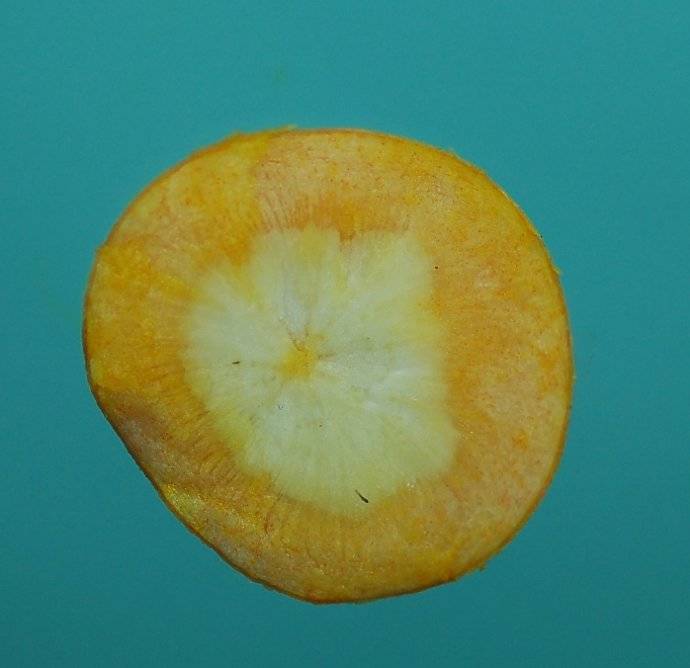
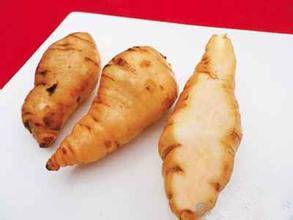
Di Huang, as one of the traditional Chinese medicines, is first mentioned in the Shen Nong Ben Cao Jing, classified as a superior product, and is a culinary and medicinal treasure, rich in nutrition and delicious. Depending on different preparation methods, it can be classified into Sheng Di Huang (Raw Rehmannia), Xian Sheng Di (Fresh Raw Rehmannia), Da Sheng Di (Large Raw Rehmannia), Gan Di Huang (Dried Rehmannia), and Shu Di Huang (Prepared Rehmannia). Nowadays, the medical community simplifies it to just Sheng Di Huang and Shu Di Huang.
Fresh Di Huang and dried Di Huang are used as cooling blood-clearing herbs. Freshly dug ones are pounded for juice; raw is cold, dried is cool, and hot is warm. Shu Di Huang is made by steaming and drying raw Di Huang with wine, which does not harm the stomach. The Ben Jing Feng Yuan states: “Shu Di Huang, steamed and dried with fire, turns bitterness into sweetness, thus it is the yang within yin, and can replenish kidney essence.” The properties change from cold to warm, and from bitter to sweet, with functions shifting from cooling heat to nourishing blood, enriching yin, and filling marrow. The Ben Jing records that it “fills the bone marrow, promotes muscle growth, and with prolonged use, one remains youthful and healthy.” The Ben Cao Jing Shu praises it as “the essential medicine for kidney tonification, a superior product for nourishing yin.” Therefore, “any insufficiency of the organs can be nourished by it.” It is commonly used for symptoms caused by deficiency of liver and kidney essence and blood, such as soreness in the lower back and knees, dizziness, tinnitus, premature graying of hair, night sweats, nocturnal emissions, and diabetes.

If insufficient, efficacy is hard to achieve; if excessive, the flavor and properties are lost. The processing of Chinese medicinal materials involves soaking, boiling, roasting, frying, and steaming, and it is essential to adhere strictly to the principles. The preparation of Shu Di Huang involves a unique process of “nine steams and nine dries,” which requires selecting high-quality Di Huang, undergoing refinement and soaking, then steaming nine times in a copper pot and drying nine times, totaling 80 processes that take a month to complete.
The specific method is to wash raw Di Huang, add pure yellow wine in a certain ratio, mix well, and seal the container; allowing the raw Di Huang to absorb the wine completely, then heat and steam it; collect the juice that flows out during steaming, steam until the Shu Di Huang appears dark and soft, take it out and dry it for a day; mix it with the collected juice and yellow wine, steam for another day, take it out; dry for another day, repeating this process nine times until it is “black as lacquer, bright as oil, sweet as honey, fragrant as syrup” before it can be used.
Shu Di Huang is sweet, slightly warm, and enters the liver and kidney meridians, nourishing yin and replenishing blood. All things follow the principles of yin and yang, and medicines are also divided into yin and yang; Shu Di Huang is a medicine of the yin category. It is a great tonic for kidney water, and kidney yin cannot be produced suddenly. Nourishing yin should not seek quick effects, and yin medicines must be administered in large doses, which Shu Di Huang precisely fulfills. Before the Song Dynasty, Di Huang had five major functions: dispelling blood stasis, treating cough, strengthening the stomach, filling essence, and nourishing yin and clearing heat; now it has shrunk to just the last two.
Modern pharmacological studies show that Shu Di Huang contains rich amounts of sitosterol, mannitol, rehmannioside, rehmannia glycosides, sugars, glycosides, and various vitamins and minerals, which can lower blood pressure, reduce blood lipids, inhibit thrombosis, and improve myocardial ischemia; it also has significant blood-nourishing effects. Additionally, Shu Di Huang has cardiotonic, diuretic, liver-protective, anti-inflammatory, antifungal, and blood sugar-lowering effects.
After the cold dew, autumn is gradually deepening, and people easily feel fatigued and weak due to excessive consumption in summer; there is a saying, “A summer without illness is three parts deficiency.” Autumn is a suitable time for nourishing yin and replenishing, and Shu Di Huang is ideal for consumption in this season. Shu Di Qi Ju Congee is a great health-preserving dish for autumn. The recipe includes 20 grams of Shu Di Huang, 20 grams of goji berries, 5 grams of chrysanthemum, 100 grams of japonica rice, and an appropriate amount of rock sugar.
Women are primarily governed by blood. Li Shizhen in the Bin Hu Mai Xue said, “Women with abundant blood easily conceive, while those with abundant qi find it difficult to conceive.” Therefore, Si Wu Tang (Four Substance Decoction) has become a holy medicine for regulating women’s ailments, composed of: 12 grams of Shu Di Huang, 9 grams of Bai Shao (White Peony), 9 grams of Dang Gui (Angelica), and 6 grams of Chuan Xiong (Szechuan Lovage). It has the effect of nourishing blood and regulating menstruation. It is effective for symptoms of blood deficiency, such as paleness, palpitations, insomnia, and menstrual irregularities.
The Art of War states: “A good commander avoids the enemy’s sharpness and strikes at their lethargy. Do not engage the enemy’s stronghold directly, nor attack their solid formations; this is the principle of adaptability.” This means that a skilled commander should avoid the enemy’s strengths. The Suwen: On the Correspondence of Yin and Yang also states: “When it is prosperous, wait for it to decline.” When evil qi is at its peak, one should avoid its sharpness and not confront it head-on, to prevent mutual destruction; when the evil qi begins to decline, one can choose the right moment to strike, reflecting the military principle of “avoiding sharpness and striking at lethargy.” There is a strategy of “not confronting the enemy’s stronghold directly, nor attacking their solid formations” in military tactics, and similarly, in medicine, there is a method of “not pricking the hidden heat, nor pricking the muddled pulse.”
If the kidneys are healthy, water can control fire; if deficient, fire cannot be controlled, leading to heat syndromes, known as yin deficiency with fire movement. How should this be treated? Should it be tonified or drained? Tonification may retain the evil, while draining may harm the body. Qian Yi’s Directives on Pediatric Medicine treats it with Liu Wei Di Huang Wan (Six-Ingredient Rehmannia Pill). The formula heavily uses Shu Di Huang as the monarch herb, filling essence and nourishing marrow, enriching yin and tonifying the kidneys, filling bone marrow, and promoting muscle growth. The ministerial herbs Shan Zhu Yu (Cornus) nourish the liver and kidneys and can also astringe essence; Shan Yao (Chinese Yam) tonifies both spleen and kidneys, supporting the source of postnatal transformation. The three herbs work together to tonify the liver, spleen, and kidneys, known as “three yin tonification.” For any method of tonifying yin essence, it is essential to drain the “turbid” to preserve the “clear,” allowing yin essence to be replenished. The kidneys are the residence of water and fire; if the kidneys are deficient, water overflows, and yin deficiency leads to fire movement, thus Ze Xie (Alisma) is added to drain dampness and turbid, preventing the cloying nature of Shu Di Huang; Mu Dan Pi (Moutan) clears and drains fire, and moderates the warming and astringent nature of Shan Zhu Yu; Fu Ling (Poria) strengthens the spleen and drains dampness, pairing with Shan Yao to support healthy transformation. The combination of these three herbs is referred to as “three drains,” draining dampness and turbid while lowering the relative fire. This formula combines “three tonifications” with “three drains,” focusing on tonification; the three yin of the liver, spleen, and kidneys are tonified, primarily nourishing the kidney yin essence.
Qing Xu Da Chun proposed that treating patients is like preparing for battle, and using medicine is like employing military strategy. The goal of military strategy is to win the war, while the goal of medicine is to overcome disease. Therefore, the Art of War and the Huang Di Nei Jing should be essential readings for medical practitioners. Many diseases arise from indulgence in desires and qi stagnation; indulgence leads to great movement of qi and blood, depleting water, and prolonged depletion leads to dryness, causing fire to become unsettled in the kidney palace, and if prolonged, fire will also perish. With great depletion of water and fire, how can life continue in the formless? However, the fire in the kidneys must be replenished with water; when water is sufficient, fire will naturally arise. When kidney water is initially depleted, kidney fire must be guided back to its source through water replenishment, which can be achieved with Gui Zhi (Cinnamon); when kidney water is severely depleted, leading to weak kidney fire, it is a chronic condition that requires significant tonification of kidney water to generate fire, thus Ren Shen (Ginseng) and Fu Zi must be heavily used, but water tonification must not be neglected, and without Shu Di Huang, how can kidney water be replenished?
The three talents are heaven, earth, and humanity; the three lights are sun, moon, and stars, corresponding to humanity’s essence, qi, and spirit, while medicinal materials include Tian Dong (Asparagus), Di Huang, and Ren Shen, embodying the unity of heaven and humanity. There are also the three talents and five elements, meaning the selection of medicinal materials strictly follows the theory of the five elements. The 28 medicinal substances selected from plants, animals, and minerals correspond perfectly with the 28 lunar mansions.
Among plant medicines, we take “roots, stems, leaves, flowers, and fruits”; “roots” include Ren Shen and Di Gu Pi (Rehmannia Root); “stems” include Rou Cong Rong (Cistanche); “leaves” include Yin Yang Huo (Epimedium); “flowers” include clove flower buds; “fruits” include goji berries. From a color perspective, goji berries are red; prepared Di Huang is black; Yin Yang Huo leaves are green; and after calcination, Shi Yan (Stone) is white, encompassing all five colors. This is the unique aspect of the Gui Ling Ji formula, which can be said to be astonishing, but the more marvelous aspect lies in the preparation process. The production process of Gui Ling Ji involves 365 steps, with 28 medicinal substances each using 28 different preparation methods. In the “five elements preparation method,” gold, wood, water, fire, and earth correspond to silver pot refining, charcoal burning, water bathing, fire burning, and earth burying, allowing the medicinal effects to return to the five organs. From this, we can see the true essence of Chinese medicine, which is the essence of Chinese medicine.
Di Huang is grown in many places, including Henan, Jiangsu, Zhejiang, and Beijing, but the best is the Hua Di Huang from Jiaozuo, which is known as one of the “Four Great Huai Medicines” along with Hua Shan Yao (Huai Yam), Hua Ju Hua (Huai Chrysanthemum), and Hua Niu Xi (Huai Achyranthes). According to modern medical tests, 10 grams of Jiaozuo Di Huang is equivalent to over 100 grams from other regions. Due to differences in soil and climate conditions, when seeds of Jiaozuo Di Huang are introduced to other regions for cultivation, their medicinal properties significantly decrease, typically degrading within one or two years.
Di Huang is graded by size, with prices based on 14 pieces per pound as the standard. The first-grade dried goods are within 14 pieces per kg, appearing spindle-shaped or cylindrical with a soft, moist texture, grayish-white or gray-brown on the surface, and gray-brown or yellow-brown on the cross-section, with oiliness. The taste is slightly sweet. There should be no fibrous roots, old roots, raw hearts, scorched, impurities, insect damage, or mold. The second grade is within 32 pieces per kg, the third grade within 60 pieces per kg, the fourth grade within 100 pieces per kg, and the fifth grade over 100 pieces per kg, with the smallest diameter being over 1 cm. The processing methods include sun-drying and oven-drying; Sheng Di Huang affected by high temperatures undergoes saccharification, turning brown or black, with a sticky texture, and the taste is more sweet than bitter. If Sheng Di Huang is cut and dried without heating after being dug up, it is light yellow-white, has not undergone saccharification, thus has a non-sticky texture, and the taste is more bitter than sweet. In our pharmacy, aside from Sheng Di Tan (charred raw Rehmannia), the rest are generally cut into slices, with grades of three or four and one or two, with larger slices being better.
Shu Di Huang is irregularly shaped, both inside and outside appearing pitch black, with a wrinkled and uneven surface. It is soft in texture, with a moist cross-section, and the center often shows shiny oily lumps, with high viscosity and sweet taste. The best quality is fat, soft, uniformly black inside and out, and shiny.
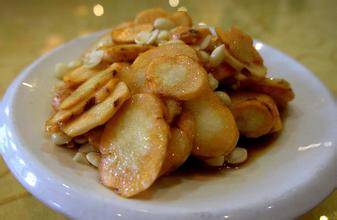

The famous formula for treating post-stroke hemiplegia and aphasia is Di Huang Yin Zi (Rehmannia Decoction), recorded in medical texts as created by Liu Hejian during the Jin Dynasty, but this is not historically accurate. The ancestral formula of Di Huang Yin Zi is the four-season tonifying formula from the Su Nu Jing before the Qin and Han dynasties, with a summary preserved in the Wai Tai. In the Tang Dynasty, Sun Simiao’s Qian Jin treated men’s five labors and seven injuries with an internal tonifying powder, which is basically consistent with Di Huang Yin Zi, but Sun’s formula tonifies deficiency, while Liu’s formula treats post-stroke deficiency. In the late Northern Song Dynasty, the official compilation of the Sheng Ji Zong Lu repurposed this ancient tonifying formula for post-stroke kidney deficiency and aphasia, naming it Di Huang Yin, with the composition, functions, and indications identical to Liu Hejian’s Di Huang Yin Zi, except that the name lacks the suffix “Zi”. The Sheng Ji Zong Lu was completed in 1118 AD, while Liu Hejian had not yet been born, and later generations mistakenly attributed this formula to Liu, which was a historical error.
Shu Di Huang is nourishing, but the medical community often states it can harm the stomach, so those with poor spleen and stomach should not take it. Therefore, Sha Ren (Amomum) is often used with Shu Di Huang to aid digestion and absorption. However, ancient understanding differs greatly from modern views; for example, in the Tang Qian Jin, Di Huang San is believed to have the effect of “benefiting qi, regulating the middle, and replenishing deficiency, making one hungry and eliminating heat.” The Jin Zhou Hou even advocates using Di Huang as the main herb for “abdominal cold and deficiency, inability to eat, and food not digesting,” similar to taking digestive enzymes today. The views of the Jin and Tang dynasties were based on clinical practice, aligning with the ancient herbal texts stating it “benefits the large and small intestines, and eliminates food stagnation in the stomach.” Moreover, Ye Tian Shi also dared to use Di Huang as the main herb for “vomiting and diarrhea.” Ancient views on promoting digestion contrast sharply with modern views on harming digestion; which is correct?
What is learned from books is always shallow; true understanding requires practice. It can be said that practitioners of traditional Chinese medicine are all practical individuals.
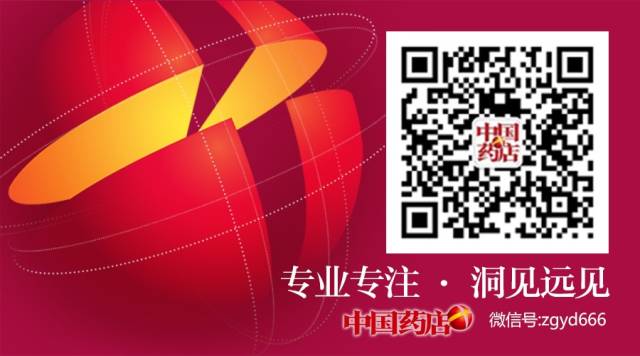
Long press the image for 3 seconds to scan the QR code to follow
If you like it, please give a thumbs up! ↙

